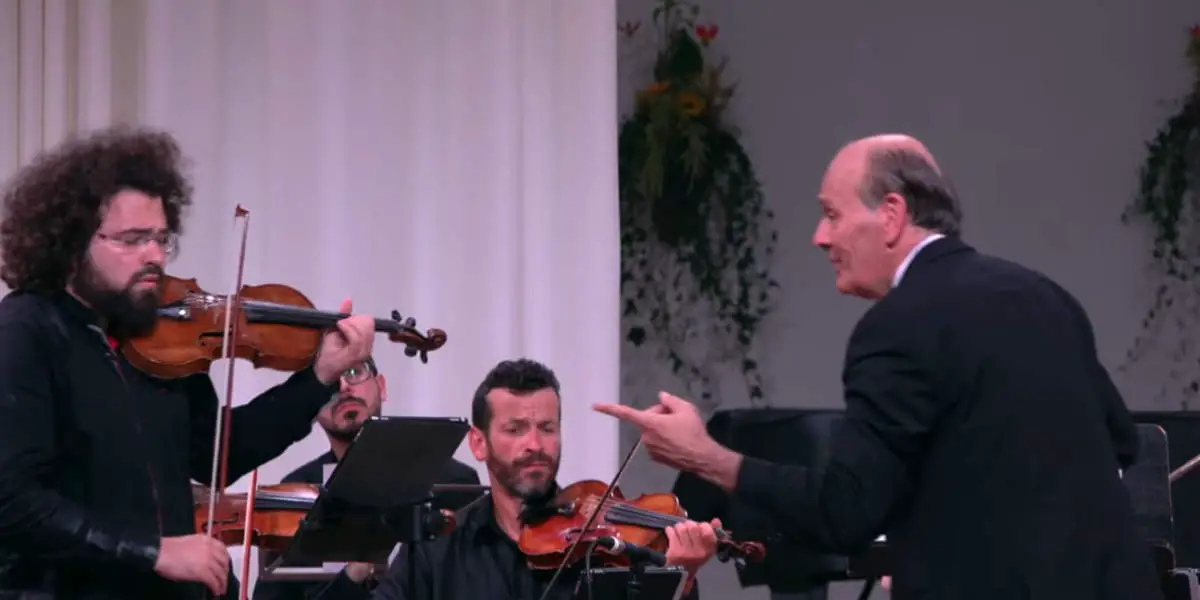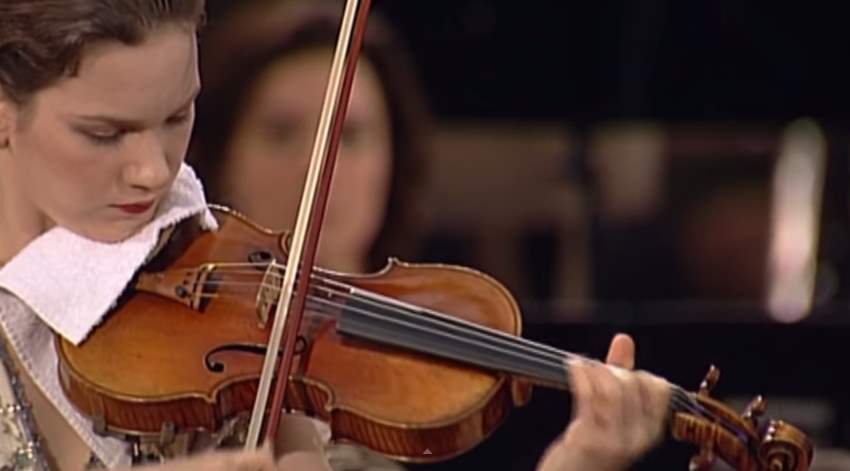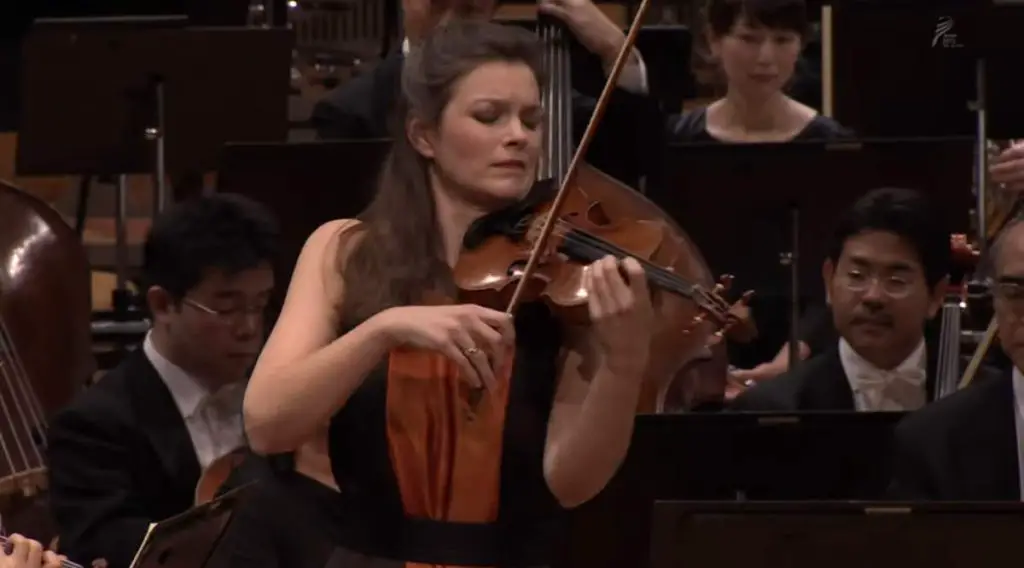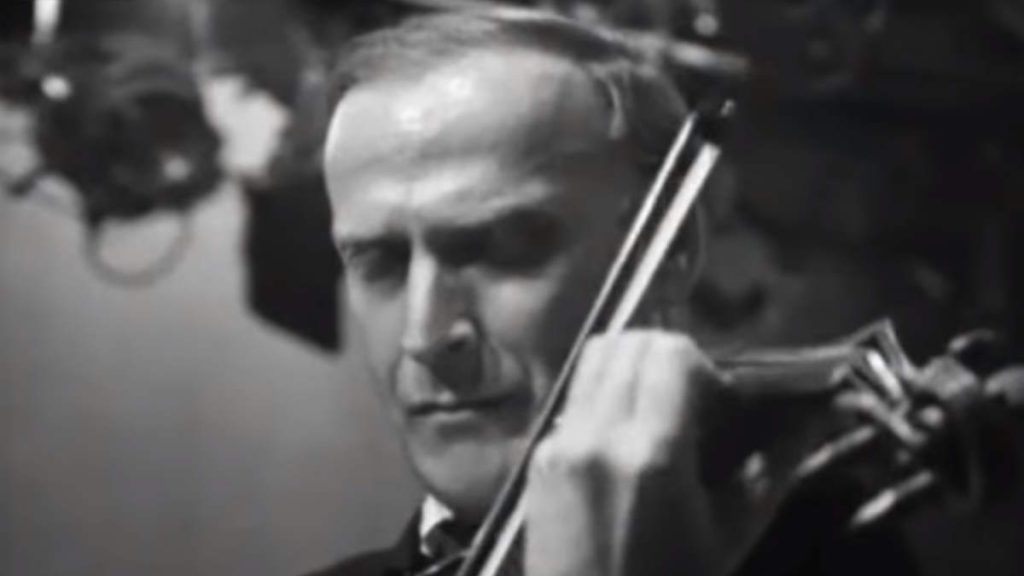Accompanied by the CHAARTS Chamber Artists, the Greek-Albanian violinist Jonian Ilias Kadesha performs Wolfgang Amadeus Mozart’s Violin Concerto No. 3 in G major, K. 216. Conductor: Gábor Takács-Nagy. Recorded during the Boswiler Sommer Festival 2018. Concertmaster: Max Baillie.
Mozart’s Violin Concerto No. 3
Mozart composed this concerto in Salzburg in 1775 when he was 19 years old. In a letter to his father, Mozart called it the “Straßburg-Concert”.
Researchers think this epithet comes from the motive in the third movement’s central section, a local, minuet-like dance that already had appeared as a musette-imitating tune in a symphony by the Austrian composer, violinist, and silvologist (biological science of studying forests and woodland) Carl Ditters von Dittersdorf, who was a friend of Haydn and Mozart.
- Allegro: The Allegro is in sonata form, opening with a G major theme, played by the orchestra. The main theme is a bright and happy discussion between the solo violin and the accompaniment, followed by a modulation to the dominant D major, then its parallel key D minor. It experiments in other keys but does not settle and eventually heads back to the tonic, G major, in the recapitulation with the help of the cadenza.
- Adagio: The second movement is also in ternary form, and in the dominant key of D major. The orchestra begins by playing the well-known and beautiful main theme, which the violin imitates one octave higher. The winds then play a dance-like motif in A major, which the violin concludes on its own. After a conclusion in A, the violin plays the main theme again, remaining in the same key. When it should have sounded A natural, it sounds A sharp, and the melody switches to B minor, in a fairly tragic passage. It soon modulates back to A major, and to the home key of D major through the main theme. After the cadenza, and in a quite unusual thing for Mozart to do, the violin plays the main theme again, thus concluding the movement in D.
- Rondeau. Allegro: The third movement is a Rondeau Allegro, and opens with an orchestra theme which gave the concerto its nickname: “Straßburg”. After a lonely, short passage by the oboes only, the solo violin enters with a different melody which modulates to D. A brilliant and high passage in D is soon followed by a descending arpeggio-like melodic line which eventually leads to the G string and repeats itself. After the second time, the violin plays the lonely oboe line from the introduction. A chromatic scale then leads to the “Straßburg” theme with the violin playing. The orchestra imitates the violin and abruptly changes to B minor and a B minor violin theme: exactly the same theme as in the first violin solo, played in the relative minor key. As the theme itself repeats, it once again abruptly changes to E minor. The small E minor cadenza introduces the orchestra, which once again plays the “Straßburg” theme in G major. After a couple of bars in D major by the orchestra, the music goes from Allegro to an Andante in G minor, almost in the fashion of a scherzo-trio form. The strings play saltando quavers while the violin plays a note-rest small melodic line which repeats itself and eventually leads to a G major Allegretto. The violin plays a crotchet-only playful theme, while the orchestra plays brilliant and fast threesome up-and-down notes, in a way that the solo violin’s part acts as a background only. The parts switch and now the orchestra plays the playful theme, while the violin gets to show off by playing fast notes. The quick passages stop for the violin to play a more ceremonial theme played on the D and A strings, in the fashion of a Musette. This pattern sounds two more times until the violin concludes the fast theme with a low G, and switches to Tempo 1. After a few bars, the first solo theme that the violin played is played as a variation in A minor. The violin plays the “Straßburg” theme in G minor, and the orchestra imitates it in the usual form of G major. After the typical first solo variation, this time in the tonic key. The violin plays another small cadenza which leads to the last “Straßburg” theme played in two octaves. The orchestra plays it one third time in the lower octave. Instead of ending the concerto in a pompous way, Mozart chose to end it instead with the lonely oboe theme in G major played piano, adding the feeling of a musical “disappearing”.
Jonian Ilias Kadesha

Violinist Jonian Ilias Kadesha has Greek-Albanian roots.
His playing is characterized by stylistic accuracy in the interpretation of early to contemporary works, and in the exactness of his articulation. With boundless imagination of sound, Kadesha is always in search of something new.
He is a prizewinner of the Deutscher Musikwettbewerb, Windsor International, and the Leopold Mozart Violin Competitions.
CHAARTS Chamber Artists
Founded in 2010 at the Künstlerhaus Boswil (Switzerland), the CHAARTS Chamber Artists are members of leading string quartets, united in bringing energy and sophistication to the stage for truly electrifying concerts. This international touring ensemble adopts an attitude closer to that of a band than a classical chamber orchestra.
In their collaborations with world-famous partners like Vilde Frang, Fazıl Say, and Martha Argerich, as well as with outstanding young talents, the CHAARTS create moments of rare power and emotive depth.
Sources
- Violin Concerto No. 3 (Mozart) on Wikipedia
- Pavarotti sings Pourquoi me réveiller [Massenet] at the Central Park in 1993 - April 23, 2024
- Elgar: Serenade for Strings [Concertgebouw Chamber Orchestra] - April 19, 2024
- Mozart: Serenade No. 10 “Gran Partita” [MET Orchestra Chamber Ensemble] - April 18, 2024




